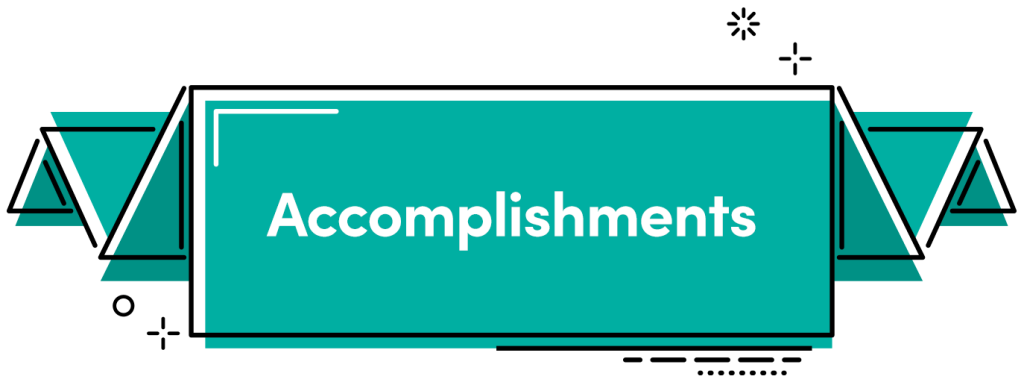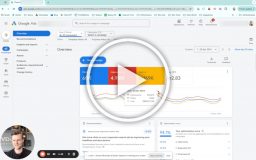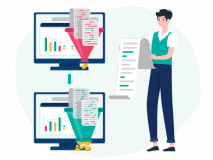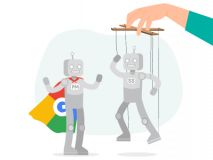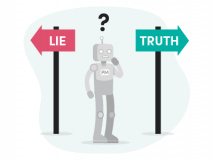So, I owe an update. I had a draft written as an update on Q1, but I didn’t feel right posting it.
We had to let go of our second hire, and I didn’t feel it was the right time. Simultaneously, I had to move from the country I had lived in for 8 years due to civil unrest. It meant that we spent the summer in Denmark and I got to spend a lot of time with Filip, but it also meant I had a lot less time in my day-to-day.
Our agency updates aren’t supposed to be a list of “look at all our cool accomplishments,” but rather a good resource for other people opening agencies. I’ve launched and run a large agency before, so sharing how I’m doing it the second time around is healthy.
But let’s get our accomplishments out of the way:
- Hit our target growth of +100% in revenue (however, slightly under our target revenue of $560k)
- Became more than “Just Andrew” (a key milestone for us)
- Added some of Denmark’s most known companies to our client list
- Had +90% client satisfaction
- Established a strong cross-channel partnership with leading Paid Social agency, PL & Partners and Email Marketing agency, Ackermann Kommunikation
- Our processes work: Now we need to formalize them
What Should The Owner’s Role Be?
One of the big moments in Q1 was what my role should be.
As you might remember from my last update, then we’ve chosen to double down on building out our Danish team and postpone building the US office until 2019/2020.
We also moved slightly away from the “remote only”-strategy I originally had. All employees are still allowed/encouraged to work from home whenever they want, but we no longer have a remote-only strategy.
This has meant that we’ve had to reconsider what my role should be seeing I’m the only truly remote employee at the agency.
My role was initially intended to do it all until we were more than five people.
The responsibilities in an agency can be largely categorized in the following buckets:
- Agency “Blueprint” Development
- New Business / Sales
- Client Management
- Operations (Leading the team)
- Admin/Finance
- Marketing
My passions lie in:
- Agency “Blueprint” development
- Marketing
Agency blueprint development is everything related to R&D, processes, frameworks, client strategies, mindset, etc. The agency blueprint development is what makes SavvyRevenue, well, Savvy.
Since the beginning, I’ve had a deep desire not to get locked into the day-to-day. The agency must run without me. The agency must grow without me.
The decision was therefore made for our first hire, Filip, to take the lead on the Danish team. It makes perfect sense for him to be that person, which allows me to focus on the other responsibilities in the agency. Especially since he’s there in person to manage, help, and coach our PPC Managers means he will be able to do an even better job than I will thousands of kilometers away and with “only” a time zone overlap of 4 hours.
Another notion was that Filip is more than competent for the responsibility, so why take more on my shoulders than I have to?
I think entrepreneurs, especially younger ones, have a tendency to think that they can do more than they actually can, and then the excuses start coming: Well he also has a ton of responsibilities, so it’s okay he’s not that organized/on time/following processes, etc.
But looking at it from a 30,000-foot view – isn’t that a mistake in itself?
I think so.
The Chicken or the Egg: When to Build Processes When You Are Just Starting Out?
I have two main thoughts on process-building.
On one hand, it’s crucial that new hires are not trying to reinvent the wheel. Having them come in with no processes is a recipe for working the founding team to work 100 hours a week just to maintain the same level of quality as before.
On the other hand, then it’s tough to build an entire book of standard operational procedures before you make your first hires. You don’t know whether you are building out processes that are useful, or impossible to follow.
I’m happy we decided to postpone most of our process-building until after we had our first hires in place.
There are four reasons why I’m happy that we didn’t build processes before we hired our first hires.
- I’m no longer tied up in the day-to-day of most of our clients, so I can invest more time in building processes.
- I get immediate feedback from multiple people whether a process is good or not.
- We had to reiterate on our process-framework a few times before we found the one that works for us. (Imagine if I had written 200 pages on how we do PPC using a bad framework?!)
- I’ve had a full year to try different tactics and experience different levels of success, that has ultimately improved our processes.
We tried a couple of different approaches to process-building, but eventually found a framework that works for us:
- Me writing down a step by step process
- The issue here was that it was way too time-consuming to write and to read
- Recording a screen share video, and outsource the actual process-writing
- The issue here was that just recording the video meant I did everything by memory on the fly. Making these videos simple and to the point with me yammering on was almost impossible for the writer.
- I write an outline, shoot a screenshare video of me doing the work and then outsource the actual process-writing
- This was much better as I was able to follow the outline during my video. It made the video much more concise, but turning the video into a process still just resulted in a wall of text.
- The winning formula: Write an outline, add the most important steps in short sentences and shoot 1-3 minute videos of the work being performed when needed
- This is where we are today, and it’s working well.
- The framework allows anyone to get a great overview of the necessary steps
- The videos allow anyone to revisit the actual way to do a task as well as our tips
My tip for new agencies is, therefore, to wait with building processes until you’ve made your first hire or two. You can easily manage the first couple of employees with day-to-day management and ad hoc “processes”, which will free you up to build processes that you can see an immediate ROI on when implemented.
Just make sure you don’t get caught in the hamster wheel of filling up the time that you should be spending on building processes with client-work. Because you might be able to manage a small team without processes, but it requires a lot of man-hours from you and as you scale you will have to spend more time for each new hire. That’s not how it’s supposed to be.
Note: I keep writing “before our first hire” and it’s because I see Filip, my actual first hire, as more of a partner than my first hire.
Hiring for Right Now, or For the Future in a New Agency
Figuring out your hiring strategy is not easy. Luckily, I had been here before.
Yesterday, I sat in a room of 500 agency owners at Traffic & Conversion. The question came, who here have built an agency beyond 150 people? I stuck my hand up along just one other person.
The typical agency trajectory is to play around in the 1-3 person team size for a couple of years until you find your stride.
We wanted to avoid that.
For the first 8 months, it was just Filip and I. We hired the wrong fit in the beginning of the year, which set us back more than I care to admit. We therefore ended up hiring four people from September to November.
The reason why I built an agency was to do amazing things, and we can’t do that with a small team. We don’t get access to the kind of advertisers we want access to with a two-person team.
We decided to take a leap and hire for the future. We over-invested in personnel towards the end of the year, so we could make sure that we could take on the advertisers that were a fit for us.
It has its downsides though:
Our own time is spread thin. Filip went from managing himself to managing four people in the span of two months.
Adding four people also means we didn’t have enough clients. I had to push my own salary two months. That’s not why I decided to start an agency. We should be profitable enough to pay my salary without issues.
Ultimately, we felt it was worth the extra effort to skip a stage or two in building our agency.
Now in February, I’m super happy that we made that choice. Otherwise, we would have had to say no to a lot of interesting cases.
But Q4 was really hard. Add to it that I relocated my family to Dallas on September 1st, then Q4 was a lot of work.
Should You Hire Juniors or Seniors?
We decided to do both.
Because of our target market (larger advertisers), then we need people who have a lot of experience in our market. Juniors can be taught how to perform tasks, but it takes a lot longer to learn how to set the strategy for an account or take the lead on the client relationship.
If we had to wait for our Juniors to be ready to carry the entire client relationship, then we wouldn’t be able to accept the larger clients we have taken on in December/January.
Our Juniors fulfil tasks, and aren’t directly responsible for client communication. They are always learning and have a goal of managing their own portfolio within 12 months.
As our first Junior said: I’ve learned more here in three months than the full year I worked in my previous agency.
Our Seniors own the entire client relationship and PPC management, but is backed by both Filip and I to ensure we are working with the right strategy in place. They are given an outcome, and are expected to find the best route to that outcome by themselves.
The big challenge with hiring experienced people is that they aren’t easy to find, and they will in most cases not join your little one-person agency. I have spent years growing my presence online, so we were able to have talks with people that straight out said: Listen, I didn’t want to join a startup, but your story is interesting and you are clearly not “yet another” agency.
Therefore, my tip is this: When you look at producing content for marketing your agency, think about how that content will also help attract applicants for your positions.
I’d guess that about 25-40% of the people on our email list in SavvyRevenue are potential hires, and not clients.
Not Without Disappointments
Yes, we hired a strong team, but it wasn’t without disappointments. We had secured a strong candidate for our Head of Innovation role, but had him slip between our fingers at the last minute for another opportunity.
You win some, and you lose some, but I could see all the amazing things this person would achieve in their role at SavvyRevenue.
Hiring a Copy of Yourself
A question small agencies often ask: Who should my first hire be? If I can just hire a copy of me then we can scale the business.
But that misses the point. Building a business is not about getting a bunch of mini-mes. It’s about building an operation that produces amazing results.
My thoughts: If you want a copy of yourself, find a partner. Otherwise, it’s absolutely impossible to attract the right type of talent.
We’re hiring for people that can fulfil really specific roles inside SavvyRevenue. We know we won’t get copies of Filip or I. And that’s just fine.
We want everyone to follow a set Google Ads framework, but knowing they have the permission to step out of our framework when they have a good reason to do so.
Sometimes I Feel Like an Arrogant Bastard
We say no about half the time we’re matched with an advertiser (either referred or through our content efforts).
Initially, I tried to provide as much value as I could before I referred the business elsewhere. I still try to do that, but I’m running out of time in my day-to-day.
In most cases, I get positive feedback when I let somebody know about our monthly minimums engagement and the kind of clients we work with.
But there is a nagging feeling in the back of my mind. It hasn’t helped that some of those leads have gone on social media afterwards and “complained” (though it solidified that we weren’t the right fit anyways).
Our aim is to work within our circle of excellence by:
- Not taking on new “smallest” clients
- Not taking on clients that are too big
- Focusing on eCommerce cases on the rise
Not taking on a new smallest client: The smallest clients in an agency gets the least attention. We therefore never take on a client that’s smaller than our current smallest client. We also routinely trim our portfolio. In January, we let go of three clients.
It’s opened up our capacity for other clients that are a better fit.
Just because we do Google Ads well, it doesn’t mean we are the best fit if we aren’t excited about the case.
Not taking on clients that are too big: Our current cap is $350k month in Denmark, and $600k in the US. We don’t take on clients who are 50% bigger than our current largest client. This ensures no one client is making up too large of a portion of our fees.
This also ensures that we can actually deliver the quality that we promise.
Focusing on eCommerce cases on the rise: This means we want to work with healthy businesses. I had two cases in 2019 where I saw good potential for doubling an advertiser’s Google Ads. But once we did that, there wasn’t much more we could do.
Seeing that our framework is built to scale eCommerce businesses, it’s less fun when we feel that we “have nothing else to do” after six months of work.
Remember to Reflect on What’s Going Well
During Q1 of 2018 I started feeling a bit impatient. Coming from an agency model where we saw 150+ new clients come in per month to SavvyRevenue where we only need one new client per month has been quite a change for me.
I started being impatient that we weren’t growing faster.
I was impatient with the leads were coming in. Why were we not getting more leads?
Why didn’t we have our own PPC software yet?!
I had forgotten the long term picture. I had forgotten we’re still in the “early” stages.
With Filip’s not so gentle nudging, I’ve been able to remind myself to focus on the long-term. We shouldn’t solely measure our success in monthly or even quarterly financial targets. We have a ten year plan of SavvyRevenue becoming the most sought after PPC agency in the ecommerce field.
Our most important objective in 2018 was a very simple one: Deliver the absolute best results we can for our clients in order to solidify us as one of the best PPC agencies (not just a couple of skilled individual performers).
Our secondary, but almost as important, objective was to continue building out a strong team.
We’re just hitting our first full business year. Reflecting on how small this time frame is in the big picture and the accomplishments we’ve made then I feel tremendously proud of what we’ve been able to achieve.
Investing in Marketing or Our Team
One choice that we had to make in Q3 was whether we should use our marketing budget to fund the hires that we were planning on making.
We did not have enough clients to hire four people over two months. We simply didn’t.
We decided to cut all marketing efforts and costs.
It was done with the following in mind:
If we can come out of 2018 with 15 clients that are raving fans rather than 20 who think we are doing an OK job, then we will have a strong referral engine.
And that has come true. We still get about half of our clients from our early content efforts, so we will begin investing time and resources in this part again.
Focus for 2019: Continue Developing a Strong Team
We are looking to add the following team members in 2019:
- Inbound Marketing Manager
- Product Manager, PPC
- 1-2 Senior PPC Managers
- 1-2 “Junior” PPC Managers
The first two roles have one key thing in common. They aim to replace roles I have today. That’s not to say I do two people’s worth of work, but I do a part of both.
As we grow, it’s important that we move toward creating a cohesive unit rather than relying on any one individual.
Excited About 2019
We’re beyond excited about 2019, but also know that this will be the year where we solidify our position or we crash and burn. I have a lot of faith in the team, processes, and client relationships we are building, so I am optimistic.
Looking forward to 2019, we have a revenue target of $1,000,000 to $1,250,000. This needs to be achieved with a healthy profit margin while maintaining my salary and taking on the types of clients we work best with. Long term, keeping everything is balanced is really important to our success.
This goal means we will need to add more three to four new team members. If you feel like you fit any of these roles above, reach out to me and let’s talk. (andrew at savvyrevenue.com)
If you enjoy hearing about the agency side of SavvyRevenue, I’d love to hear your thoughts in the comments or to my email.



